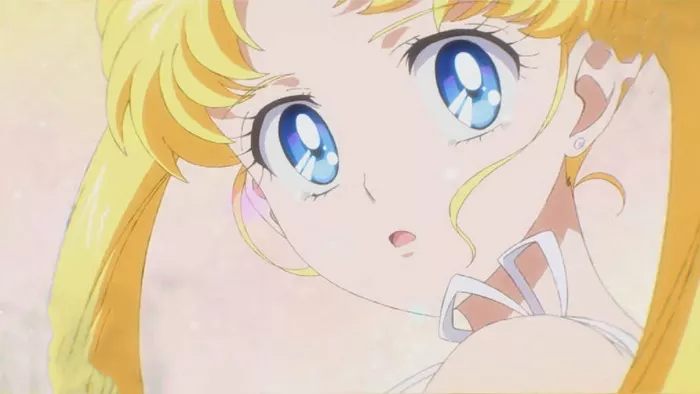The two-part film Sailor Moon Cosmos, released in 2023, marks the grand finale of the Sailor Moon Crystal reboot, drawing from the final arc of Naoko Takeuchi’s iconic manga. The movie follows Sailor Moon and her fellow Sailor Senshi as they confront the powerful and destructive Sailor Galaxia. While both Sailor Moon Cosmos and popular shonen films like My Hero Academia: Two Heroes deliver thrilling battles and captivating character arcs, the magical girl saga sets itself apart by addressing shortcomings in areas where shonen films often falter, especially in the treatment of female characters and ensemble casts.
A Female-Led Storyline with Depth
One of the most noticeable distinctions between Sailor Moon Cosmos and My Hero Academia: Two Heroes lies in the portrayal of female characters. Despite its success, My Hero Academia has been criticized for sidelining its female heroes, often placing them in supporting roles while male characters dominate the spotlight. Melissa Shield, a brilliant and courageous character in Two Heroes, is one such example, as her potential impact is overshadowed by the male protagonists. In contrast, Sailor Moon Cosmos showcases a strong, all-female ensemble cast where each character gets her moment to shine, from Usagi Tsukino (Sailor Moon) to the newest mysterious member, Chibi Chibi.
In the final arc, Chibi Chibi descends from the sky, altering the course of the story in surprising ways. Although her origins remain unclear until the movie’s second part, she plays a critical role in the battle against Sailor Galaxia, summoning the wise Princess Kakyuu to aid the Senshi in their fight. The movie ensures that all the Sailor Senshi, including secondary characters, have a chance to stand in the spotlight, offering a balanced representation that My Hero Academia sometimes lacks.
Unique Settings and Lasting Impact
My Hero Academia: Two Heroes introduces I-Island, an artificial location filled with untapped potential, yet it fails to explore this world beyond the initial setup. In contrast, Sailor Moon Cosmos provides a more expansive and imaginative universe. Sailor Galaxia’s Shadow Galactica is a terrifying empire built on the destruction of celestial bodies, adding a haunting depth to the story. The location plays a central role in the final battle, and its grim history raises the stakes in ways Two Heroes does not. Beyond Shadow Galactica, familiar settings like Usagi’s hometown and the Crystal Palace from previous arcs return, offering fans both nostalgia and a deeper connection to the world.
Humor Without the Aggression
Though both films intersperse comedic moments within their action-packed narratives, the humor in Sailor Moon Cosmos comes across as more charming and less abrasive. Characters like Minako Aino (Sailor Venus) bring lightheartedness to the film without relying on harsh or confrontational exchanges. By contrast, much of the humor in My Hero Academia revolves around Katsuki Bakugo’s violent outbursts and insults, a trope that, while initially amusing, can become tiresome over time.
All Characters Have a Moment to Shine
In Sailor Moon Cosmos, no character is left in the shadows. Iconic characters such as the Sailor Starlights, Sailor Neptune, and Chibiusa return to face Sailor Galaxia alongside the original Senshi. Each character is given a chance to fight and contribute meaningfully to the plot, a contrast to My Hero Academia: Two Heroes, where the supporting cast, particularly the female heroes, are often relegated to the background in favor of a few prominent figures.
A Tribute to the Series’ Legacy
In a nostalgic nod to longtime fans, Sailor Moon Cosmos remixes the original Sailor Moon opening theme, “Moonlight Densetsu.” This updated version plays during the film’s new animation, blending the franchise’s rich history with its current, beautifully animated iteration. This tribute to the series’ roots helps bridge the gap between old and new fans, enhancing the film’s emotional impact.
LGBTQIA+ Representation Front and Center
One of the standout elements of Sailor Moon Cosmos is its LGBTQIA+ representation. The gender-nonconforming Sailor Starlights, who have been pivotal characters in the series, take center stage in the film. Additionally, the romantic relationship between Sailor Uranus and Sailor Neptune, a long-established couple in the franchise, continues to receive significant attention. While My Hero Academia features some LGBTQIA+ characters, such as Tiger and Magne, their roles are often side-lined compared to their heterosexual counterparts.
A Tale of Romance and High Stakes
The emotional core of Sailor Moon Cosmos lies in the evolving romance between Usagi and Mamoru. When Mamoru mysteriously disappears, Usagi is devastated, but she eventually recovers her memories of him. In the movie’s conclusion, the couple’s wedding is revealed, providing a heartwarming conclusion to their love story. For fans, this resolution adds an extra layer of emotional depth that My Hero Academia lacks in terms of romantic subplots.
Meanwhile, the film’s central villain, Sailor Galaxia, stands as one of the most formidable antagonists in the Sailor Moon franchise. Her ability to destroy entire planets sets her apart as a fearsome foe, and her tragic backstory adds complexity to her character. The stakes are incredibly high in the battle between Sailor Moon and Sailor Galaxia, and the climactic showdown forces both characters to confront their true desires.
Conclusion
While My Hero Academia: Two Heroes is an entertaining addition to the shonen genre, Sailor Moon Cosmos excels in areas that shonen films often overlook. With its strong representation of female characters, LGBTQIA+ inclusivity, and emotional depth, Sailor Moon Cosmos serves as a reminder of the power of magical girl narratives to captivate audiences and address important themes. Its vibrant animation, compelling storyline, and nostalgic callbacks make it a must-watch for both long-time fans and newcomers alike.

